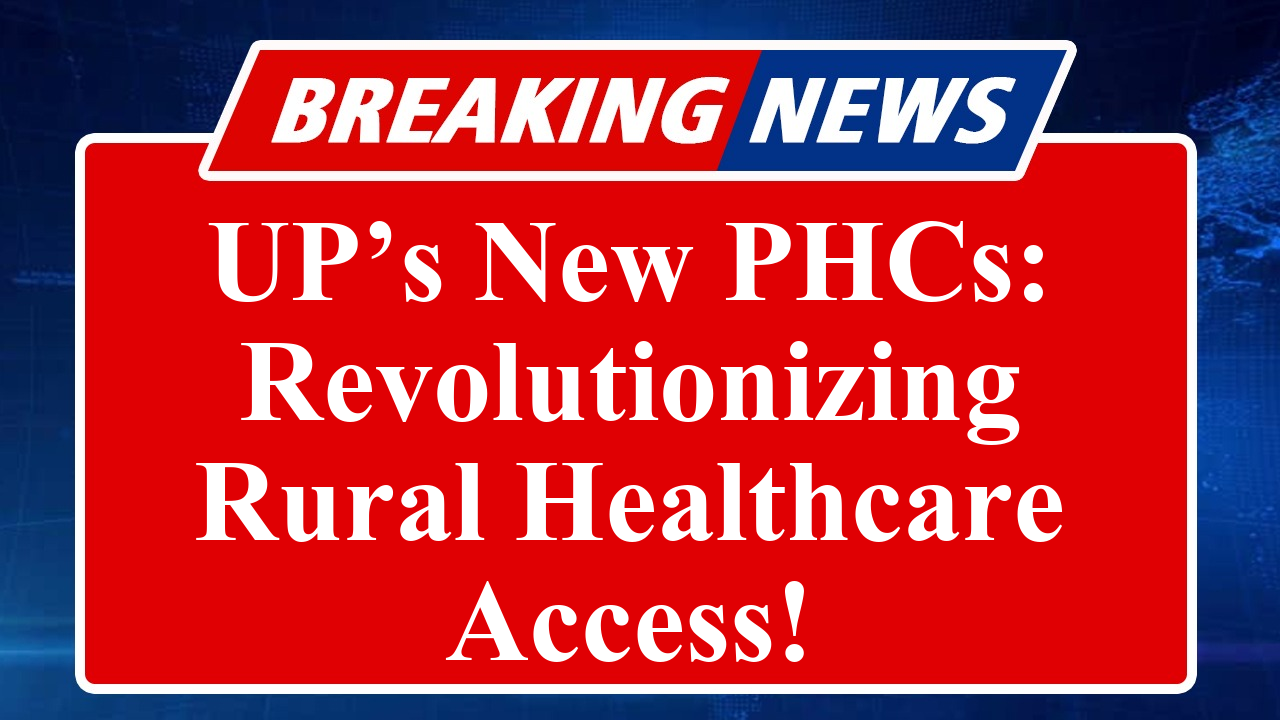UP’s government is transforming rural healthcare by establishing new Primary Health Centers (PHCs) under the National Health Mission, aiming to bridge the urban-rural health gap. With 24×7 PHCs, mobile medical units, and Ayushman Arogya Mandirs, access to quality care is improving, though challenges like staffing shortages persist.
UP’s Push to Strengthen Rural Healthcare Infrastructure
Uttar Pradesh, India’s most populous state, is making significant strides in addressing its rural healthcare challenges through the establishment of new Primary Health Centers (PHCs) and the enhancement of existing ones under the National Health Mission (NHM). As of March 2024, the state has converted 12,348 PHCs into 24×7 facilities, ensuring round-the-clock access to emergency medical services for rural residents. Additionally, 1,424 mobile medical units (MMUs) have been deployed to serve remote and underserved areas, reducing the travel burden for rural communities seeking healthcare.
The state’s healthcare initiatives align with the broader Ayushman Bharat program, which emphasizes strengthening primary healthcare infrastructure. Uttar Pradesh has operationalized over 1.77 lakh Ayushman Arogya Mandirs, transforming sub-centers and PHCs into Health and Wellness Centers (HWCs). These centers focus on preventive, curative, and palliative care, addressing issues like maternal and child health, non-communicable diseases, and infectious diseases such as malaria and dengue. The government’s efforts also include free diagnostic services and essential medicines at public health facilities, supported by Accredited Social Health Activists (ASHAs) who facilitate community-level care.
Despite these advancements, Uttar Pradesh faces significant hurdles. The “State of Healthcare in Rural India, 2024” report highlights that only 50% of rural households in the state have government health insurance, leaving 34% without any coverage. The doctor-patient ratio in rural areas remains dire, with a 36% vacancy rate for doctors at PHCs, one of the highest in the country. The shortage of specialists, such as surgeons and gynecologists, further strains the system, with Community Health Centers (CHCs) reporting a 74.2% shortfall in obstetricians and gynecologists. Only 39% of rural residents have access to diagnostic facilities within a commutable distance, exacerbating delays in treatment.
The state is addressing these gaps through innovative measures. The integration of telemedicine platforms like eSanjeevani enables virtual consultations, reducing the need for long-distance travel. The government is also incentivizing rural postings for healthcare professionals with better salaries and career advancement opportunities. Additionally, partnerships with private organizations, such as Abbott’s collaboration with Americares India Foundation, are upgrading 75 PHCs into HWCs across nine states, including Uttar Pradesh, benefiting over 2.5 million people annually.
Community participation is another focus area. ASHAs play a pivotal role in promoting immunization, nutrition, and sanitation, while Village Development Committees (VDCs) ensure the sustainability of local healthcare initiatives. For instance, in Nuh, Haryana, a similar model transformed a dilapidated community building into an E-Poshan Kendra, reducing disease spread by improving sanitation. Uttar Pradesh is adopting such community-driven approaches to enhance health outcomes.
However, challenges persist beyond infrastructure. Cultural beliefs and low awareness often lead rural residents to rely on informal practitioners or delay seeking modern medical care. The state’s low public health spending—approximately 1.28% of GDP—limits resources for rural facilities. Only 45.1% of PHCs operate on a 24×7 basis, and absenteeism among doctors remains a concern, with a 2005 study noting 45% absenteeism at PHCs nationwide.
The government’s commitment to universal healthcare by 2025 hinges on addressing these systemic issues. Expanding medical education with a rural focus, as suggested by the 2019 National Consultation on rural healthcare, could improve the doctor-patient ratio. Allocating postgraduate seats for family medicine and community health nursing is another proposed solution to shift the focus from urban-centric tertiary care to rural primary care.
Uttar Pradesh’s rural healthcare transformation is a work in progress, balancing ambitious infrastructure development with the need for skilled personnel and community engagement. The state’s efforts to bolster PHCs and leverage digital health solutions mark a significant step toward equitable healthcare access, but sustained investment and policy reforms are crucial to overcoming longstanding disparities.
Disclaimer: This article is based on recent reports, government data, and news sources, including the “State of Healthcare in Rural India, 2024” report, National Health Mission updates, and media coverage. Information is accurate as of August 2025, but readers are advised to verify real-time data from official sources for the latest developments.

